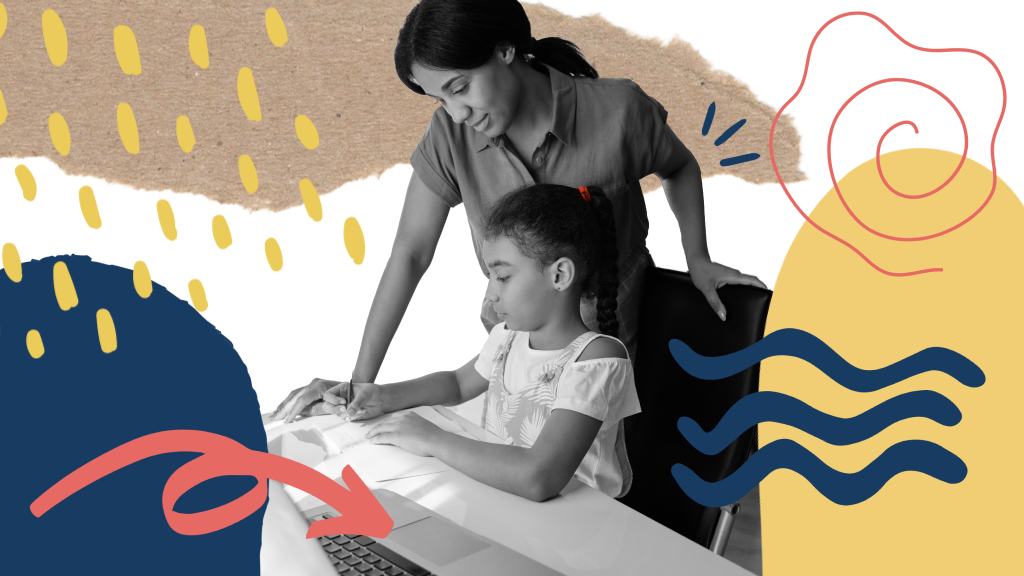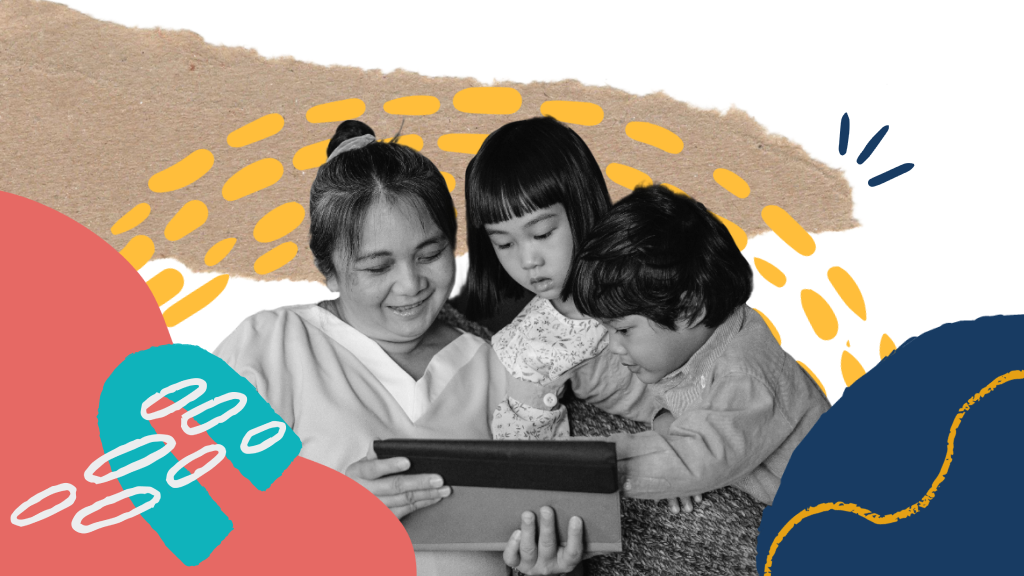What Is Culturally Responsive Education?
6 Jan 2021


Social-emotional learning (SEL) utilizes a student’s existing set of cultural beliefs, knowledge and values as a launching point for their academic learning and overall education. Teachers user SEL activities to harness the power of their students’ cultural backgrounds and help them connect with their curriculum on a different level. To do this, educators, parents and school administrators employ culturally responsive teaching (CRT) methods. There are many benefits and misconceptions associated with CRT. Today, we’re going over the ways SEL and CRT work together in the classroom, and we’re breaking down their meaning as well as providing some examples of each.
What Does Culturally Responsive Mean?
One of the keys to being a successful educator is being able to identify with your students. This ability is culturally responsive teaching. Culturally responsive teaching is identifying with and understanding a student’s background, home culture, values and beliefs as a way to better educate them.
What Is Culturally Responsive Teaching?
Culturally responsive education is a student-centered and research-based approach to teaching that embraces the diversity found in today’s classrooms. Teachers that utilize culturally responsive learning methods are aware of the value that identifying with their students’ diverse backgrounds, cultures and beliefs adds to their education. Being culturally responsive creates an equitable learning experience for students from various backgrounds, races and cultures. Cultural responsiveness is an intentional way of teaching that is incorporated into every aspect of a student’s learning. Being culturally responsive also allows teachers to connect with the parents of their students on a different level. As teachers and parents are both active participants in a child’s learning and development, practicing cultural responsiveness in the classroom offers a way to bridge the two parties. Understanding areas of a parent’s background, culture and religion will help teachers when educating children from different families. Teaching is a two-way street and requires a common goal between both parents and the schools. When teachers are culturally responsive, they raise expectations and make learning relevant for all students regardless of their ethnicity, beliefs and cultural backgrounds. There are many different ways to incorporate culturally responsive teaching into a students’ curriculum and it offers many several benefits for students, teachers and families alike.
Benefits of Culturally Responsive Teaching for Students

Teaching is about connecting with your students on a personal level. Culturally responsive teaching is a research-based approach that empowers both teachers and students. When a teacher better understands a student’s culture and ethnic background, they can truly begin to connect with each other. Culturally responsive teaching and curricula are mutually beneficial to both students and teachers in a variety of ways. Culturally responsive teaching enhances a student’s learning experience in several areas by: Culturally responsive teaching enhances a student’s learning experience in several areas by:1. Building relationships: Culturally responsive teaching helps students build better relationships with teachers, peers and others moving forward. As teachers foster an environment that promotes cultural inclusion and embraces each student’s diverse background, students are given opportunities to learn more about one another and connect socially. Relationships are one of the cornerstones of culturally responsive classrooms and pedagogy.
2. Motivating and engaging: Culturally responsive teaching motivates and engages students by demonstrating the value of education in a student’s everyday life. When students see real-world examples of how their strong academic skills can benefit their everyday lives, they’re more likely to become motivated to learn and engaged in the classroom.
3. Promoting a sense of belonging: Students that feel understood by their teachers also feel like they belong. A culturally responsive teacher creates a warm, inviting and safe environment that fosters learning and enhances a student’s sense of belonging. When students feel like they’re free to be themselves, they are more likely to have an open mind and explore new possibilities.
4. Strengthening identities: The positive environment created by culturally responsive teaching also strengthens a student’s identity and promotes self-awareness. Students begin to form their identity and become the person they’re going to be for life during their middle and high school years. When they’re accepted, valued and affirmed, students are more likely to succeed academically, professionally socially throughout their lives.
These are just a few of the benefits that culturally responsive teaching can have on your student. When students develop a positive and supported mindset, they see themselves as valuable people who can realize their potential in life.
Misconceptions of Culturally Responsive Teaching
If you’re a teacher or parent, you may have heard of culturally responsive teaching from watching the news or from misguided sources across social media. It’s important to address some of the misconceptions associated with culturally responsive teaching. Since culturally responsive teaching is a relatively new framework for educating young people from diverse backgrounds and cultures, you can imagine this idea is not always understood by everyone. This lack of information leads to several common misconceptions associated with culturally responsive teaching, including the following mistaken ideas: 1. Culturally responsive teaching is only for students of color.2. Culturally responsive teaching means identifying and eliminating your own implicit bias.3. Culturally responsive teaching is a set of prescriptive actions.
Let’s take a closer look at these common misconceptions and the ways culturally responsive teaching addresses each.
Culturally Responsive Teaching Is Only for Students of Color
One of the biggest misconceptions associated with culturally responsive teaching is that it’s only for students of color. This statement is not true. In her post on the matter, the leading expert on culturally responsive teaching, Zaretta Hammond, discusses how teachers often use cultural responsiveness incorrectly by simply connecting race with traditional educational and academic topics. Culturally responsive teaching is about connecting the intellectual, emotional and social aspects of learning, not just about connecting with a certain racial identity.
Culturally Responsive Teaching Means Identifying and Eliminating Your Own Implicit Bias
While Hammond discusses the ways teachers can identify and eliminate their own bias, she emphasizes that this process is not a crucial first step to learning how to be culturally responsive. As a teacher, you should be aware of any biases and work hard towards eliminating those. However, being culturally responsive is not about “you” the teacher — it’s about fostering academic success in all of your students regardless of background.
Culturally Responsive Teaching Is A Set of Prescriptive Actions
There is no set of rules or prescriptive actions for developing a culturally responsive teaching environment. This idea is one of the biggest misconceptions associated with cultural responsiveness. Again, Hammond works to dispel this myth and emphasizes the “responsive” aspect of cultural responsiveness in the classroom. Culturally responsive teaching is a framework for developing the academic and intellectual capacity of your students by connecting learning with their everyday lives and cultures at home. To do this effectively, teachers must take on an adaptive mindset that focuses on the individual student, not groups of students separated by race or ethnicity.
Why CRT Is Important
As you can imagine, culturally responsive teaching is important to our schools and teaching our young people during this critical time in their lives. Culturally responsive teaching adds value to a student’s learning experience by connecting academic concepts with their home life and culture. Culturally responsive teaching is important for several reasons including: 1. Building and strengthening the relationships between families and schools.2. Enhancing, informing and building future academic curriculums.3. Empowering students to be active learners in and out of the classroom.4. Creating equality in classrooms. These are just a few of the reasons culturally responsive teaching is important to schools, students and communities. As our schools become more and more diverse, teachers with the ability to adapt their methods and strategies to effectively reach learners of all types from various cultures and backgrounds become increasingly vital to the growth of communities and our society as a whole.
How CRT Works With SEL
SEL learning activities equip kids with the skills they need to deal with everyday challenges and manage their emotional responses. Social-emotional learning involves helping kids develop and use social and emotional skills.

CRT educators are much better equipped to promote social-emotional learning in their classrooms. Since culturally responsive classrooms and teachers promote traits such as empathy and self-awareness, then they naturally work to enhance a student’s social-emotional learning. Teaching kids to embrace themselves along with others is an area where cultural responsiveness and social-emotional learning intersect.
What Does Culturally Responsive Education Include
A culturally responsive education shapes inquisitive minds and prepares kids to succeed in the future. There are many different components of a culturally responsive classroom and education, such as:
- An inclusive curriculum: A culturally responsive curriculum is an inclusive curriculum. Teaching materials, learning resources and supplemental learning materials that are inclusive and diverse in nature are a way to instill cultural responsiveness in education.
- High expectations for students: Culturally responsive curriculums set high expectations for students regardless of their background, beliefs, values and ethnicity. This outlook promotes success in and out of the classroom.
- Solutions to language barriers: Culturally responsive classrooms and curricula account for language differences in their students. Many students speak a different language at home than they do at school, so identifying any language barriers becomes vital to a student’s success. Teachers that identify differences in language are able to effectively communicate with students and parents and provide supplemental teaching and learning materials in a student’s native language.
Examples of Culturally Responsive Teaching
After learning more about CRT, you may be asking yourself what examples of culturally responsive teaching look like. Whether your student is virtual, in-person or homeschooled, here are some examples of CRT and ways you can incorporate these methods into your classroom or your child’s learning experience.
Get to Know Your Students
While this method may sound like a no-brainer strategy for executing culturally responsive teaching methods, you’d be surprised how many teachers don’t know much about their students’ personal lives, home lives, interests and life goals. Get to know your students through various surveys or questionnaires designed with questions regarding their hobbies, home life and various interests as a way to better inform you of their aspirations and motivations for success. For example, a student interested in sports may be motivated differently than a student interested in music and vice versa. Taking the time to get to know your students on a personal level will help you better reach them.
Make Journaling Part of Your Teaching

Asking your students to create and keep a journal is a great way to promote SEL and develop a culturally responsive classroom. Students can share their journal entry topics or keep them private. Journaling is a great way to promote self-reflection and build your students’ writing and storytelling skills. When you offer room for students to share their entries fosters a safe environment, they’ll feel comfortable expressing themselves and sharing their vulnerabilities. You’ll help create caring, empathetic individuals who are tolerant of others.
Use Supplemental Learning Materials That Positively Depict Different Cultures
As a teacher or parent of a homeschooled student, you may not be able to hand-pick all of your learning or teaching materials, but you can utilize supplemental learning materials that positively depict different cultures and ethnicities. Incorporate relevant movies, images and other media that reinforce what your student is learning while positively representing and depicting various cultures in a positive manner.
Culturally Responsive Curriculum With Lessonbee
Lessonbee’s culturally responsive curriculum offers support for your in-person, virtual and homeschooled student’s health education. Lessonbee’s health education content makes it easier for students to develop valuable social skills with access to a comprehensive health education curriculum. At Lessonbee, we use designed adaptivity to create culturally relevant, online learning experiences for your student or students. Whether you’re teaching virtual, in-person or homeschooled students, Lessonbee offers digital learning experiences complete with diverse characters and stories that students from all walks of life and backgrounds can relate to. Lessonbee embraces cultural and ethnic diversity in our learning materials, creating a culturally responsive environment for middle and high school learners. With Lessonbee’s culturally relevant and diverse content across our various courses and classes, students will role-play as other characters from various cultures or backgrounds, allowing them to respond to challenging health questions without the vulnerability and exposure that comes with traditional in-person role-playing activities. This strategy helps build their awareness of stigmas that other people are likely to face. These are just a few of the benefits of Lessonbee’s culturally responsive curriculum and learning activities. Our classes and courses have much to offer young learners by connecting their cultures and health education.
Explore Lessonbee’s Culturally Responsive Content
Social-emotional learning is steeped in culturally responsive teaching and curricula. Creating an inclusive curriculum, breaking down language barriers and simply getting to know your students are all effective ways a culturally responsive teacher can support their students’ social-emotional learning. Equip your students or child with the tools they’ll need to succeed in school and throughout their lives. Explore Lessonbee’s culturally responsive content to get your student started on the path toward a brighter, more successful and empathetic future today! Check out some of our free classes or sign-up to become a member and access hundreds of courses and classes designed to educate your middle or high school-aged students on the important health issues facing them. For one low annual price, you can access all of our health education content today!
Read More

Human Trafficking: Understanding the Impact and How to Help

A Guide to Social Emotional Learning for Homeschooling Parents

How to Help Your Child Deal With Online Harassment

Online Safety for Parents: How to Safeguard Your Child in the Digital World



